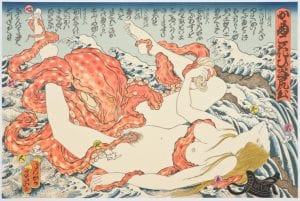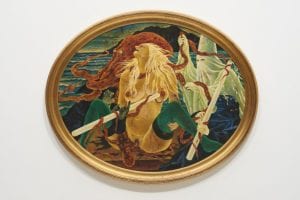For my final project, I am interrogating the work of painter and printmaker Masami Teroaka. In particular, I am interested in asking questions about his stylistic shift from traditional Japanese woodblock printing techniques to oil painting in the Roman Catholic style. I wonder how the same artist framing similar subjects in two different contexts changes the way in which viewers perceive the message, and which, if either, is more effective in communicating the artists desires? Two examples that I will be using in my research are the 2001 print Sarah and the Octopus / Seventh Heaven, and the 2015 oil St. Catherine and the Giant Octopus, 2015. Some related questions include: Why did Teroaka make this stylistic shift, and was it based on his early experiences as a working artist? What does the change in context mean to the artist? How does it change the experience of the viewer?

Writing About Contemporary Figurative Art
Just another Yale University CampusPress site

I think these are really interesting questions. I really like that you are recognizing how important the materiality and technique are for conveying a message especially with prints versus paintings. Although his subject matter is kept constant between the two mediums, the tone of the pieces are very distinct from one another.
I think this is a great question! It will be interesting to see what you discover from his experiences or influences that might have pushed him to switch. Did he continue making prints while starting his oil paintings? Or was it a total switch?